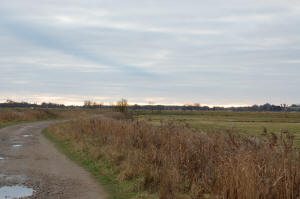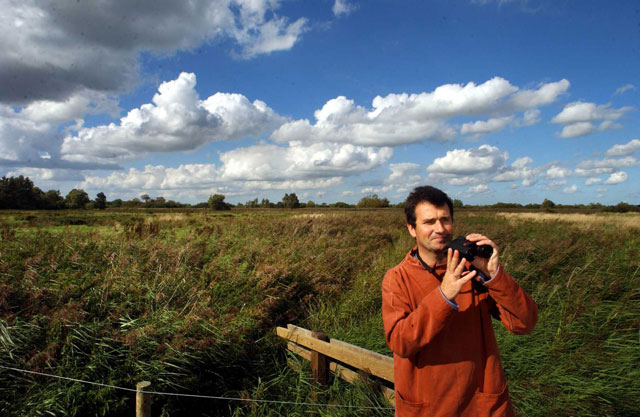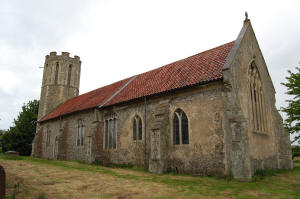|
|
|
|
Buckenham
|
| Buckenham lies on the
River Yare - eight miles east of
Norwich. (Not to be confused with New and Old
Buckenham in South Norfolk.) The name derives from
Bucca's homestead. Historically, Buckenham Ferry was an
important crossing point on the river and the location
was painted on a number of occasions in the 19th Century
by Joseph Stannard - one of the
Norwich School
Painters.

Buckenham Marshes
Buckenham marshes was also the location which
inspired the nature writer Mark Cocker to begin his book Crow Country.
It was here that he first
started to notice the amazing roosting behaviour of crows, rooks
and jackdaws. Here is the opening paragraph of the book which
captures the atmosphere of the flat
marshlands perfectly:
|
| 'I am awaiting the
arrival of night and all that means in this landscape.
Ahead of me lies a great unbound field of stubble
sloping gently down towards the hamlet of Buckenham in
the Yare valley. At the settlement's southern margin is
a tiny railway station, where I stepped down from the
train more than thirty years ago on one of my earliest
expeditions to this part of the Norfolk Broads. Beyond
that steel line is the flat expanse of the Yare's flood
plain proper, and from my position on this upper
northern slope I gain a sense of the entire valley, the
whole flow of its contours, the way that the land dips
down then rises again on the far shore like a shallow
saucer, like a natural amphitheatre, fit for the
spectacle about to unfold.' |
|

Mark Cocker at Rockland
Broad (Photo © The Independent
)
The birds were actually coming to roost
at Buckenham Carrs which is an extensive area of
woodland which lies north of the Norwich to Lowestoft railway line. He goes
on to describe the amazing spectacle:
|
|
'They wind up into a single swirling vortex that breaks
apart as small groups fling themselves to Earth. It is
an extraordinary performance. I am so mesmerised by the
flock's sudden and convulsive disintegration that I fail
to absorb the trajectory followed by any one
individual.' |
Winter is the best time to see the roost and, if you
park on Station Road close to St. Nicholas' Church, you
can watch thousands of birds wheeling above the Carrs.
(Flash photography should be avoided, however, as it
disturbs the birds.)Mark Cocker studied English Literature
at the University of East Anglia and lived for many
years in Norwich before moving out to
Claxton. Claxton
lies on the southern side of the River Yare and his move
to the 'Hollies' is also documented in the book. Cocker
is a respected nature writer and regularly contributes
articles to the Guardian. He collaborated with
fellow Norfolk-based naturalist Richard Mabey to produce
Birds Britannica. Crow Country was shortlisted
for the 2008 Samuel Johnson Prize for non-fiction.

St. Nicholas' Church, Buckenham
The 13th
Century octagonal tower of St. Nicholas' Church is a
familiar feature on the skyline at Buckenham. (It can
also be seen to good advantage from the end of
Rockland Short Dyke on the other side of the Yare.)
Today the
church is redundant but from 1863-1871 the rector William Haslam was noted for his
evangelical preaching which drew large crowds. He
eventually left Buckenham and moved to the Curzon Chapel
in London but in his book Yet not I he related many of his
experiences in Buckenham.
|
Links:
More photographs of Buckenham Marshes
|
|
|
|

